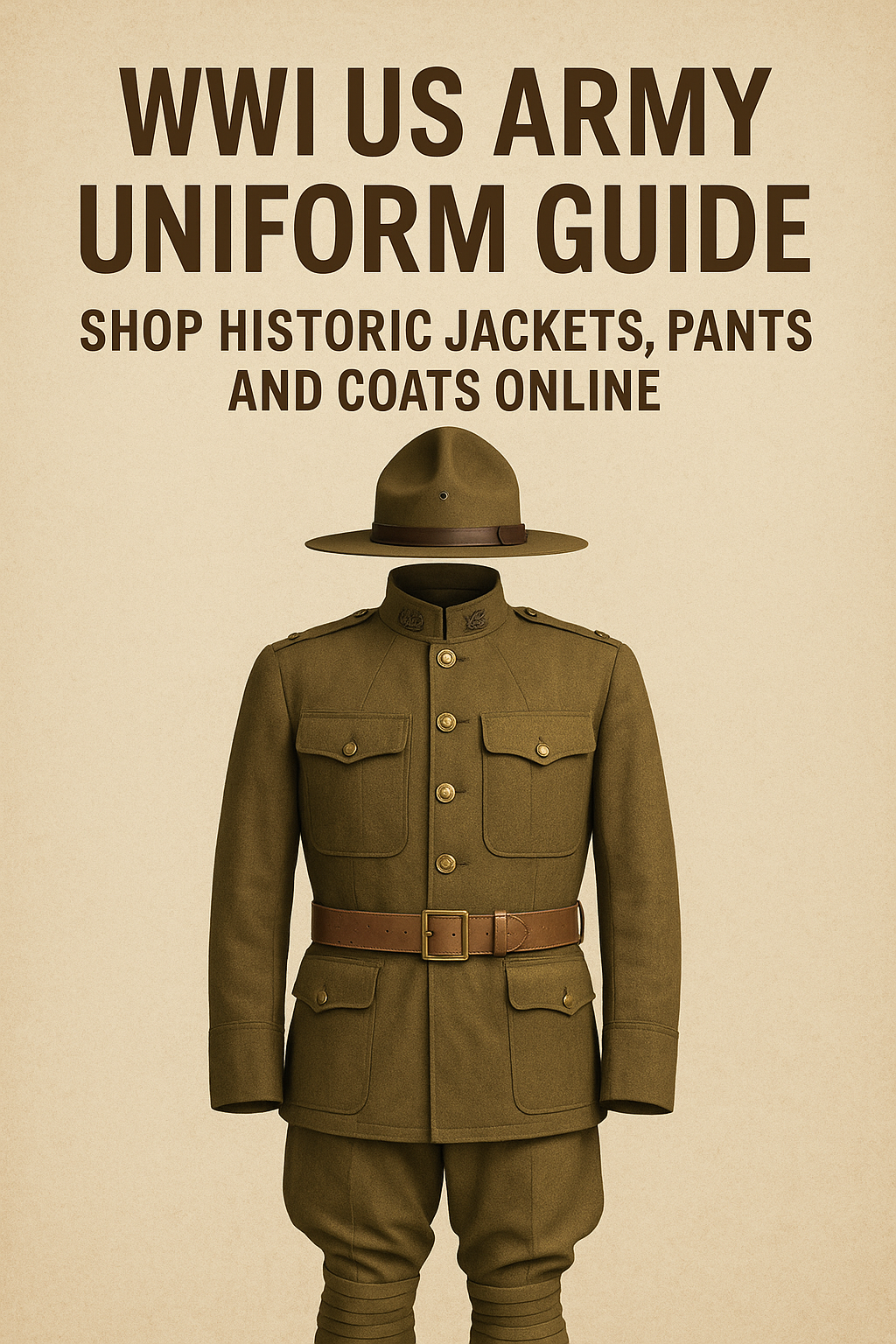
WWI US Army Uniform Components: A Detailed Guide to Iconic Military Attire
Published on Jun 26, 2025
Introduction: Why WWI Uniforms Still Matter
The First World War was not just a turning point in global history but also marked a significant evolution in military attire. The WWI US Army uniform was more than a functional set of garments—it was a symbol of discipline, unity, and national pride. Understanding its components offers insight into the lives of the soldiers who wore them and the legacy they left behind.
The Core Components of the WWI US Army Uniform
1. WW1 Trousers & Pants
A staple part of any soldier’s gear, WW1 trousers were designed for both durability and utility. Typically made from wool serge, these pants featured:
- Straight-leg cuts with room for movement
- Reinforced stitching for field durability
- Olive drab or khaki tones, offering camouflage in European landscapes
Modern reproductions, like the ones available on Paddelaters.com remain true to the original design. These trousers pair well with vintage boots and tunics, making them ideal for reenactments or museum displays.
2. The Tunic: Backbone of the Battle Dress
The wool tunic was often the most recognizable part of the WWI uniform. Key features included:
- Four-pocket design for carrying essentials
- Brass or bakelite buttons engraved with the U.S. insignia
- High-standing collars, often with branch-specific piping
The tunic formed the base of the army dress coat, which would later evolve into the more refined army dress jacket used in peacetime ceremonies.
3. WWI Outerwear: Coats and Jackets
✪ Royal Army Jacket & British Army Coat Influence
Though distinctly American, the US Army Uniform was influenced by its British counterparts. The British army coat, known for its long cut and durable wool, inspired similar American designs. The Royal army jacket, used by allied officers, often featured epaulettes and tailored fits.
Collectors often compare these with later pieces like the WW2 German leather jacket, which favored a sleek, hardened design for tank crews and officers.
✪ WW2 Leather Coat vs. WW1 Outerwear
While WWI outerwear emphasized insulation and utility, the WW2 leather coat—available on Paddelaters—introduced elements of luxury and resilience. These pieces are especially sought after for their craftsmanship and connection to aviation history.
Uniform Accessories: Completing the Ensemble
4. Puttees & Leggings
Worn tightly around the lower legs, puttees helped keep dirt and water out while offering mild protection. Made from wool or canvas, they were a vital part of field dress.
5. Service Caps & Helmets
WWI soldiers used a mix of:
- M1917 Brodie helmets for protection
- Campaign hats (Montana peaks) for training and formal events
These headpieces added a distinct silhouette to the American doughboy image.
6. Belts & Pouches
Canvas or leather belts were equipped with:
- Ammunition pouches
- First aid kits
- Bayonet scabbards
Modern collectors can find high-quality replicas or vintage originals on specialty sites like Paddelaters.
Evolution from WWI to WWII Uniforms
The transition from WWI to WWII saw significant changes in fabric, structure, and style. For example:
FeatureWWI UniformWWII UniformFabric | Wool serge | Wool blend, gabardine
Coats | Long, heavy trench coats | Streamlined ww2 leather coat styles
Trousers | Loose-fit with puttees | Tapered with integrated gaiters
Jackets | Utility-based | More tailored army dress jackets
Where to Buy Authentic Reproductions?
Why Choose Paddelaters?
At Paddelaters.com, you’ll find a wide range of historically accurate reproductions:
- WW1 trousers and pants faithful to original military specs
- Army dress jackets that reflect ceremonial precision
- Rare finds like the WW2 German leather jacket and British army coat
Each piece is crafted with attention to detail, ensuring collectors and reenactors get the most authentic experience possible.
🔗 Explore the collection: https://paddelaters.com
Tips for Collectors & Reenactors
- Match Era Accurately: Don’t mix WWI trousers with WWII jackets if aiming for historical accuracy.
- Look for Authentic Fabric Types: Wool, canvas, and leather are period-correct.
- Mind the Details: Insignias, buttons, and tailoring vary by year and division.
- Condition is Key: For vintage items, check for moth holes or stitching damage.
Final Thoughts: Preserving a Legacy
The WWI US Army uniform remains a cherished symbol of sacrifice and service. By understanding its components—from the rugged WW1 pants to the sophisticated army dress coat—we not only honor history but keep it alive through collections, reenactments, and educational initiatives.
At Paddelaters, we’re proud to support that mission by offering historically accurate uniforms and military attire. Whether you’re dressing for a reenactment, curating a museum exhibit, or simply honoring a family legacy, we’re here to help you find the perfect piece of history.
